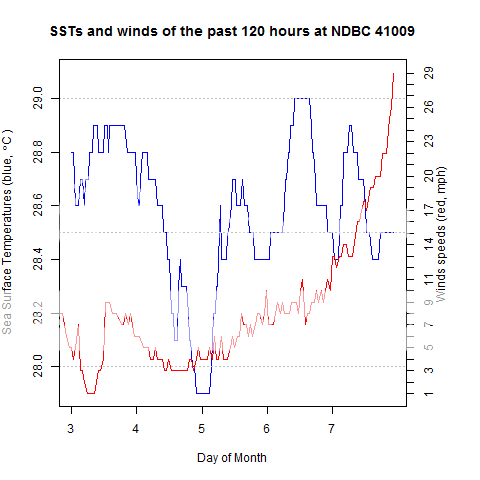Notice that all 3 of these storms were (a) a major hurricane at one point, (b) were Category 2 or weaker when they impacted the coast, and (c) made landfall. Clearly, even Brevard County has the potential for impacts from major hurricanes even if the circumstances favorable for such an event aren't likely to come together that often.
There are several factors that help determine the effects of a storm, but here's just some of the possibilities: the lunar cycle, the tides, wind speed, distance from the eye, the velocity, and the size of the wind field.
The wobbles created by the eyewall replacement cycle spared the east coast of Florida from what would have been the largest natural disaster since Hurricane Katrina, likely surpassing it. The east coast is highly populated, and Category 3-4 winds would have been wreaking havoc from Grant-Valkaria up to Jacksonville, with Category 1 winds or so in the adjacent inland counties, such as Orange and Seminole Counties.
Check out the storm track history here: Matthew track
At one point, the forecast was for the eye of the storm to rip right up Brevard County at 145 mph winds. This was why people were encouraged to leave, especially on the beach. At that point, the coast was looking at storm surge of around 11-15 feet, with many beaches being under this at their peak altitude, meaning the barrier island as a whole would have been swamped. Even Jim Cantore said that he thought the county as a whole was unsafe and went all the way down to Fort Pierce.
 |
| Still a monster, but a more distant one |
The next full moon is on Oct. 16, so Matthew arrived at literally the best possible time for such an event. With the tides already at a low point, the combination of new moon and low tide helped protect the beaches in this regard.
Here's a montage of storm damage in Brevard for your perusal.


















